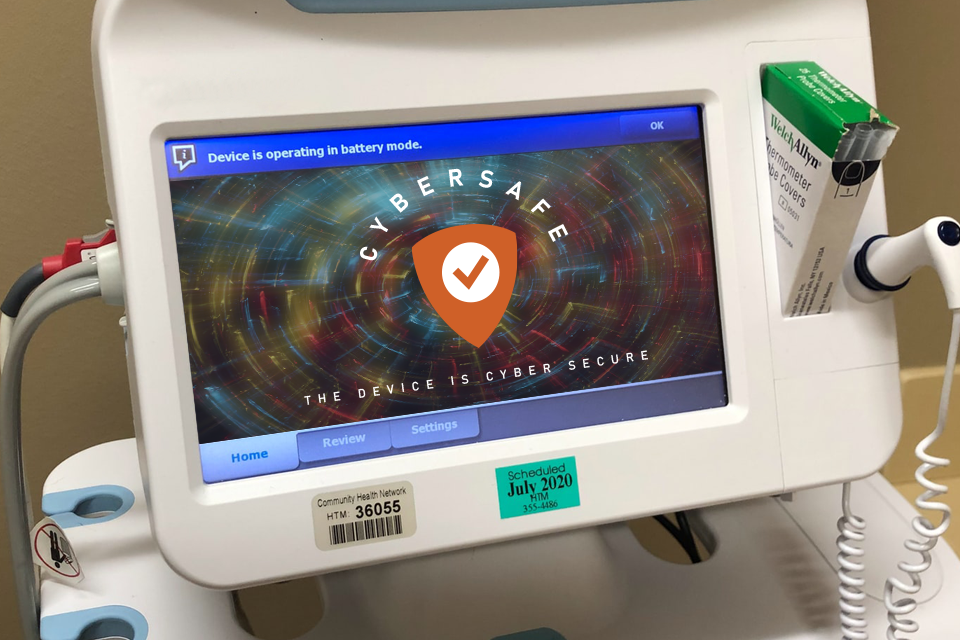Boise Cybersecurity Trends: Protecting Your Business
In today's interconnected digital landscape, cybersecurity has become a top priority for businesses in Boise, Idaho, as they strive to protect their...
5 min read
 Ashley Wheeler
:
Feb 3, 2025 10:00:00 AM
Ashley Wheeler
:
Feb 3, 2025 10:00:00 AM
As cloud computing becomes increasingly integral to modern business operations, securing your data in the cloud has never been more critical. While the cloud offers incredible flexibility and scalability, it also introduces significant security risks. For businesses, especially small to medium-sized enterprises, safeguarding sensitive data in the cloud is not just a compliance requirement—it’s essential to maintain operational continuity and preserve customer trust.
In this article, we’ll explore effective strategies for securing your cloud environment and provide actionable insights to help you protect your data.
Before you can implement effective security measures, it's important to understand the risks that cloud environments pose. Being aware of these threats is the first step in building a comprehensive security strategy.
Data breaches continue to be one of the most significant threats to cloud security. High-profile incidents, such as the 2017 Equifax breach, exposed sensitive personal information, highlighting the dire consequences of weak security measures. Breaches often occur when vulnerabilities are not promptly addressed, making it essential to stay on top of security patches and system updates.
Cloud misconfigurations are a leading cause of security incidents. For example, unsecured AWS S3 buckets have led to widespread data leaks. Misconfigurations can expose your data to unauthorized access and create vulnerabilities that attackers can exploit. It's crucial to properly configure cloud environments and regularly audit security settings to avoid this risk.
Whether malicious or accidental, insider threats are a real danger to cloud security. A 2014 case involving a former employee stealing sensitive data illustrates that even trusted individuals can compromise security if not carefully monitored. It's essential to have systems in place to manage access and track user activity to prevent insider threats.
Understanding the shared responsibility model is crucial for managing cloud security. This model outlines the division of security duties between the cloud provider and the customer:
By understanding these roles, businesses can better allocate resources to strengthen their security posture.
To protect your data in the cloud, it’s vital to implement a range of best practices. These actions can significantly reduce vulnerabilities and help secure your cloud environment.
A robust IAM system is crucial to controlling who has access to your cloud resources. You should:
Historical Insight: The 2014 Sony PlayStation Network breach, where attackers gained unauthorized access to accounts, accelerated the adoption of MFA across industries to enhance security.
Encrypting data both at rest (when stored) and in transit (during transmission) is essential for protecting sensitive information. Use industry-standard encryption protocols like AES-256 to ensure data is secure.
Managing encryption keys effectively is critical. Securely store, rotate, and control access to keys to maintain the confidentiality of encrypted data. Many cloud providers offer services like AWS Key Management Service (KMS) to help manage and protect these keys.
Historical Insight: The 2017 WannaCry ransomware attack demonstrated the importance of encryption, as organizations with strong encryption were better able to recover from the attack and mitigate its damage.
Real-time monitoring helps detect and respond to security incidents as they happen. Tools like AWS CloudTrail or Azure Monitor allow you to track user activities and system changes, enabling quick detection of any suspicious behavior.
Implementing automated alerts for unusual activities—such as unauthorized access attempts—helps you react swiftly to potential security threats. Make sure you have a response plan in place to contain and mitigate damage.
Regular audits of your cloud environment can identify vulnerabilities and ensure compliance with security policies. This practice allows you to stay proactive and minimize risks over time.
Historical Insight: The 2018 Cambridge Analytica scandal, where improper data handling led to widespread criticism, emphasized the importance of compliance with data protection regulations.
APIs are crucial for connecting cloud services, but they can be vulnerable if not properly secured. To protect your APIs:
Historical Insight: In 2019, Facebook faced a significant API vulnerability that exposed user data due to inadequate security practices. This event underscored the importance of securing APIs.
Automate data backups to ensure your information is consistently protected and available for restoration in case of data loss or corruption.
Regularly test backups to confirm they are intact and can be restored quickly in an emergency. This ensures that you won’t face complications when trying to recover lost data.
Having a well-defined disaster recovery plan is crucial for resuming operations after an incident. Regularly test the plan to ensure it’s up-to-date and effective.
Historical Insight: The COVID-19 pandemic disrupted many businesses, but those with robust disaster recovery plans were able to adapt more quickly and minimize operational impact.
Many cloud providers offer built-in security tools that can help you secure your environment:
By leveraging these built-in tools, you can bolster your security posture and reduce the overhead of managing security on your own.
When selecting a cloud provider, check for security certifications such as ISO 27001, SOC 2, and HIPAA compliance. These certifications assure you that the provider meets stringent security and compliance standards, which can help protect your data.
Historical Insight: As cloud security became a priority in the early 2010s, certifications like ISO 27001 gave businesses confidence that their cloud providers adhered to rigorous security protocols.
Artificial Intelligence (AI) and Machine Learning (ML) are changing the landscape of cloud security. AI can detect anomalies in real-time and predict potential security incidents before they happen, providing businesses with an additional layer of protection.
The Zero Trust model assumes that threats can come from both external and internal sources. By continuously verifying access requests, this approach limits the possibility of unauthorized access, even by trusted insiders.
Implementing Zero Trust: To adopt Zero Trust, focus on granular access control, continuous monitoring, and identity verification at every step of a user’s journey.
Securing your cloud environment requires a comprehensive approach that includes strong access controls, data encryption, continuous monitoring, and disaster recovery planning. Leveraging the built-in security tools from cloud providers and staying updated on emerging trends will help you maintain a strong security posture.
By following these best practices, you can safeguard your data, ensure compliance, and maintain a resilient and secure cloud environment. Contact us today if you need any assistance helping your business.

In today's interconnected digital landscape, cybersecurity has become a top priority for businesses in Boise, Idaho, as they strive to protect their...

In our interconnected world, your business's software is no exception. Whether your applications are installed locally or accessed in the cloud, they...

Medical practices in Idaho, like those across the United States, must comply with the Health Insurance Portability and Accountability Act (HIPAA)....